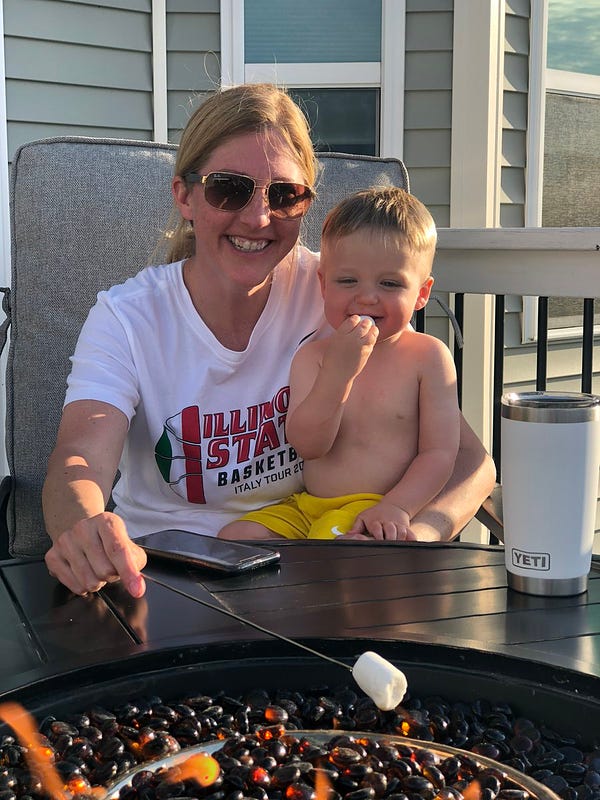Thanks for reading the Her Hoop Stats Newsletter. If you like our work, be sure to check out our stats site, our podcast, and our social media accounts on Twitter, Facebook, and Instagram. You can also buy Her Hoop Stats gear, such as laptop stickers, mugs, and shirts!
Haven’t subscribed to the Her Hoop Stats Newsletter yet?
Cheryl Reeve has won just about everything there is to win in the WNBA: Coach of the Year, Executive of the Year, six championships, more playoff games than any other coach in league history. But the head coach and general manager of the Minnesota Lynx still gets caught off guard every once in a while. Take, for example, a recent virtual meeting with her staff.
“I’m on a Zoom call, and all of the sudden [my five-year-old son Oliver] walks into the kitchen where I am,” Reeve said. “He had taken off all his clothes. … He drew clothes on himself, his face; he had head-to-toe painted himself.”
For a coach who’s had hundreds of staff meetings, it was a first.
“I fell off the chair laughing,” Reeve added. “He was so proud of himself.”
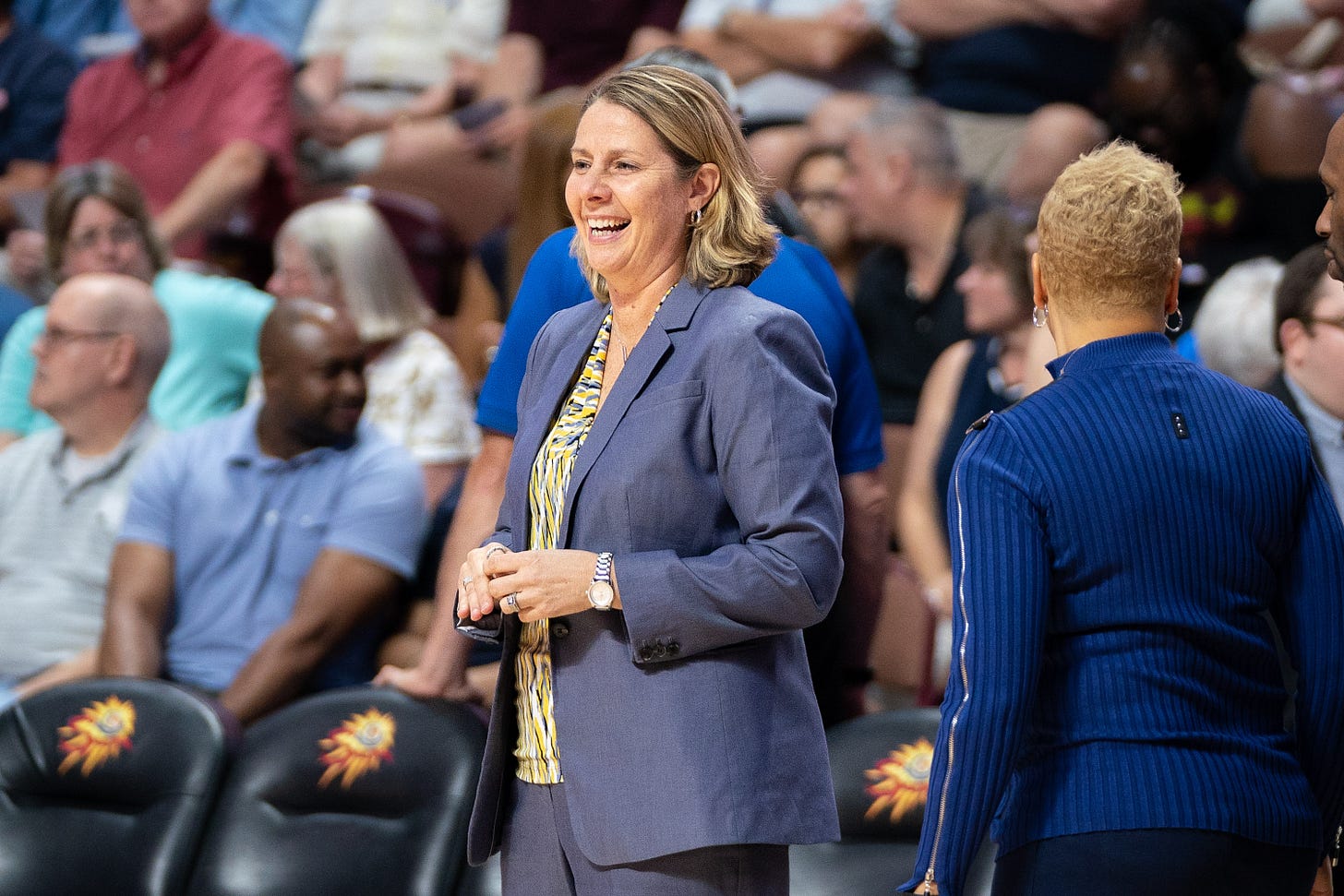
Cheryl Reeve smiles during a game against the Sun on August 17, 2018. (Photo credit: Chris Poss)
Playbooks are a necessity in a profession built on preparation; that there isn’t one for navigating the job during a pandemic is a cruel irony. From WNBA coaches waiting to begin their seasons to NCAA coaches robbed of the end of theirs, the job description is being redefined.
Coaches wear many hats — that hasn’t changed — but their implementation looks different these days. Recruiting, strategizing, supporting players, raising children — what do coaches’ roles look like in a physically isolated yet increasingly connected world?
Recruiters
One of the most significant tasks separating an NCAA coach's duties from those of a WNBA coach, recruiting is also one of COVID-19’s biggest casualties. On March 13, the NCAA temporarily banned in-person recruiting, and the policy is now in effect through at least June 30.
“Prior to everything being closed, we had a whole bunch of home visits set up,” said Arizona head coach Adia Barnes. “Plane tickets, arrangements, all that had to be canceled.”
Barnes thinks local schools may emerge the winners. “[Recruits] usually are more familiar with schools in their region because they’re driveable,” she said. “Because of COVID, I think a lot more kids are afraid to go far.”
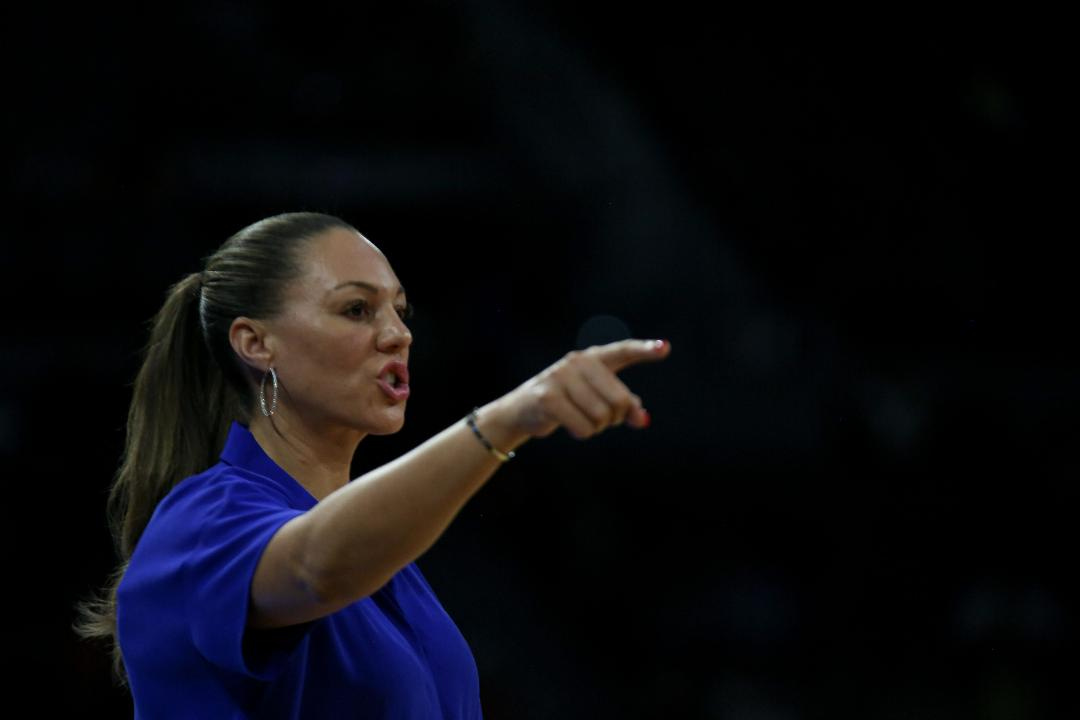
Adia Barnes points out instructions to her team during a contest last season. (Photo courtesy of Arizona Athletics)
With most 2020 recruits signed, coaches are predominantly focusing on the classes of 2021 and 2022, with one notable exception.
“[Transfers] may have to make a decision without ever being on campus,” said Oregon head coach Kelly Graves. Such was the case for former Maryland guard Taylor Mikesell, who on Saturday announced that she would be joining the Ducks without ever having visited the state of Oregon.
The transfer market has become a specialty for Illinois State head coach Kristen Gillespie. After converting a junior college All-American to a Missouri Valley Conference Newcomer of the Year in each of her first three seasons with the Redbirds, Gillespie was still looking to secure a commitment from a potential fourth in line when the NCAA restricted in-person recruiting.
“We did our first-ever Zoom home visit,” Gillespie said. “It was crazy — we were on Zoom for about three hours. I didn’t realize it was that long … At the time I’m like, ‘Oh, we’re definitely not getting this kid; we just spent three hours of her life.’”
Gillespie did get her kid — JUCO All-American DeAnna Wilson — but not without some innovation. “We had to get really creative with just videos of campus and different things like that,” she said. “We were searching the Internet for anything we could find.”
For Richmond head coach Aaron Roussell, Zoom visits and virtual campus tours are a little less vital. “We had kind of gotten out ahead and had a lot of people already on campus [prior to the NCAA’s restrictions],” he said. “We feel like we’re actually in a pretty good spot with our [class of] ‘21 commitments.”
Because Roussell met with so many recruits early on, it’s been mostly business as usual during the shutdown. “We’re still on the phone and texting with the kids,” he said. “Outside of not being able to go out and evaluate this time of year, it really isn’t a ton different for us.”
Chances to evaluate young talent have been cut out of Graves’ schedule as well. Typically, he heads to Virginia in late April for the Boo Williams Tournament, an AAU event showcasing some of the best high schoolers in the country. Upon returning to Eugene, the Oregon staff has “a moving day,” as Graves puts it. “We probably would have been sitting in [the office] … comparing notes with the staff,” he said. “Who did you see? Who did you like? Who should we move up our list? Who should we move down?”

Kelly Graves cuts down the nets after winning the 2020 Pac-12 Tournament championship. (Photo credit: Eric Evans/GoDucks.com)
Graves understands the importance of seeing live high school games, but he doesn’t think coaches will be too affected by their absence. “I think it’s made it tougher on the kids, rather than us,” he said. “Most of us kind of know who we want and who we like — that typically doesn’t change a ton.”
However, he admitted that things might be different for athletes who are still several years away from college. “The part that does hurt us as college coaches is we’re not being able to evaluate young kids, let’s say freshmen and sophomores, that we may not know because they’re either new to the AAU scene or they’ve improved,” he said.
While the current way of life should be a distant memory by the time those classes reach college, the pandemic dominos could be falling in the basketball world for much longer. Gillespie believes she’ll be more prepared in future years to recruit players who aren’t able to visit campus for various reasons. Barnes foresees another ripple effect — one beginning with the current transfer wave.
“All the kids in the transfer portal — it’s taking away ‘21 scholarships, so it’s putting a lot more pressure on a lot of kids,” she said. “A lot of ‘21s are committing fast.” Barnes speculated that 2021 recruits may realize in a few years that they rushed into a decision and reevaluate. “I think in a couple years, with this class, you’ll see more kids transferring.”
Tacticians
The courts may be closed, but the shrewd gears of a coaching mind never stop turning.
“It’s just a good time to learn,” Barnes said. “It’s a good time to rewatch some of the stuff that I want to tweak from last season … We should be a pretty good team, so I want to try to make us better.”
Making teams better is the cornerstone of coaching, but stay-at-home orders have shifted the spotlight to the mental side of it. The NCAA has strict limits on how involved a coach can be with players’ at-home physical training routines (essentially, not at all), and while the WNBA does not impose the same restrictions, most coaches are leaving it to the trainers and the players themselves to stay in shape.
“I don’t think the coaches have a lot to do with [players’ physical training],” said first-year Indiana Fever head coach Marianne Stanley. “Particularly the veterans — they’ve got their own programs.”
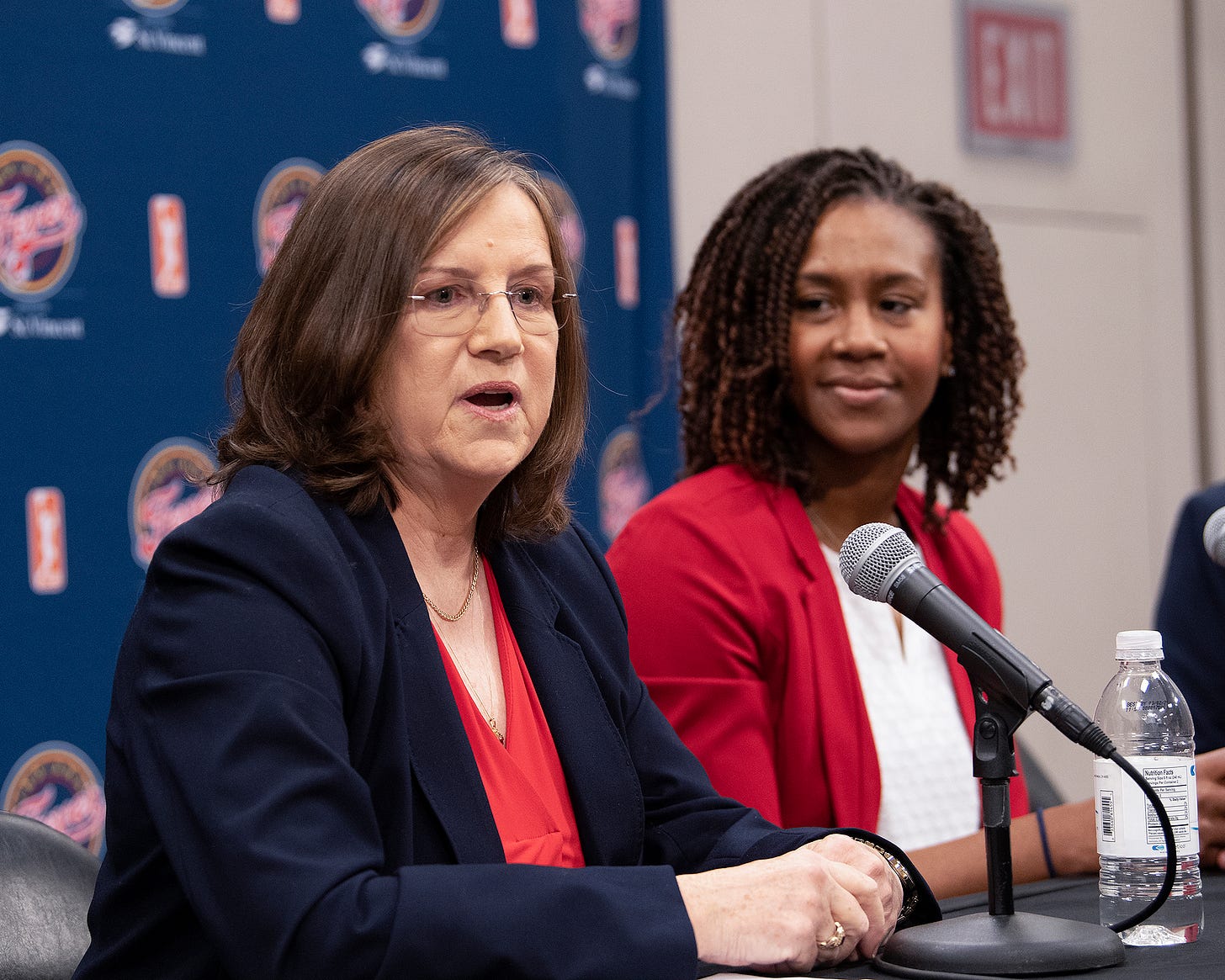
Marianne Stanley (left) is introduced as the head coach of the Indiana Fever on November 26. 2019. (Photo credit: Matt Kryger/Indiana Fever)
Intellectual improvement, rather, is what coaches are emphasizing for now — and what Reeve hopes her players are prepared to concentrate on during (a likely shortened) training camp. “We are not gonna get the time together that we typically would have,” she said. “You can’t come in not physically ready, because if you do, then we’re not gonna be ready schematically, X-and-O wise, because we have to spend time on [getting in shape].”
With the end goal of sharpening their players’ minds, some coaches are finding ways of sharpening each other’s. “A lot of coaches are sharing ideas right now,” Reeve said. “There’s some NCAA coaches, some NBA — I spend some time trying to get some ideas from a couple people that I enjoy connecting with and then sharing ideas that we have with some NCAA coaches.”
Connecticut Sun head coach Curt Miller also stays in touch with “a core group of college coaches” and has been texting or calling some of them daily since the virus hit. While they do at times have purely social calls, they also use the calls for “bouncing ideas off and spitballing basketball stuff.”
Others are learning from resources put out by their peers. Barnes has been soaking up knowledge from fellow coaches through everything from online panels to podcasts. For Roussell, it’s been videos.
“All these online clinics that coaches have been doing have been phenomenal,” Roussell said. “Obviously it was unfortunate not having the Final Four, not being on the road recruiting [where we’re] able to talk to other coaches just about the X’s and O’s, but … I’ve watched more clinics in the last probably three weeks than I have in a long time.”
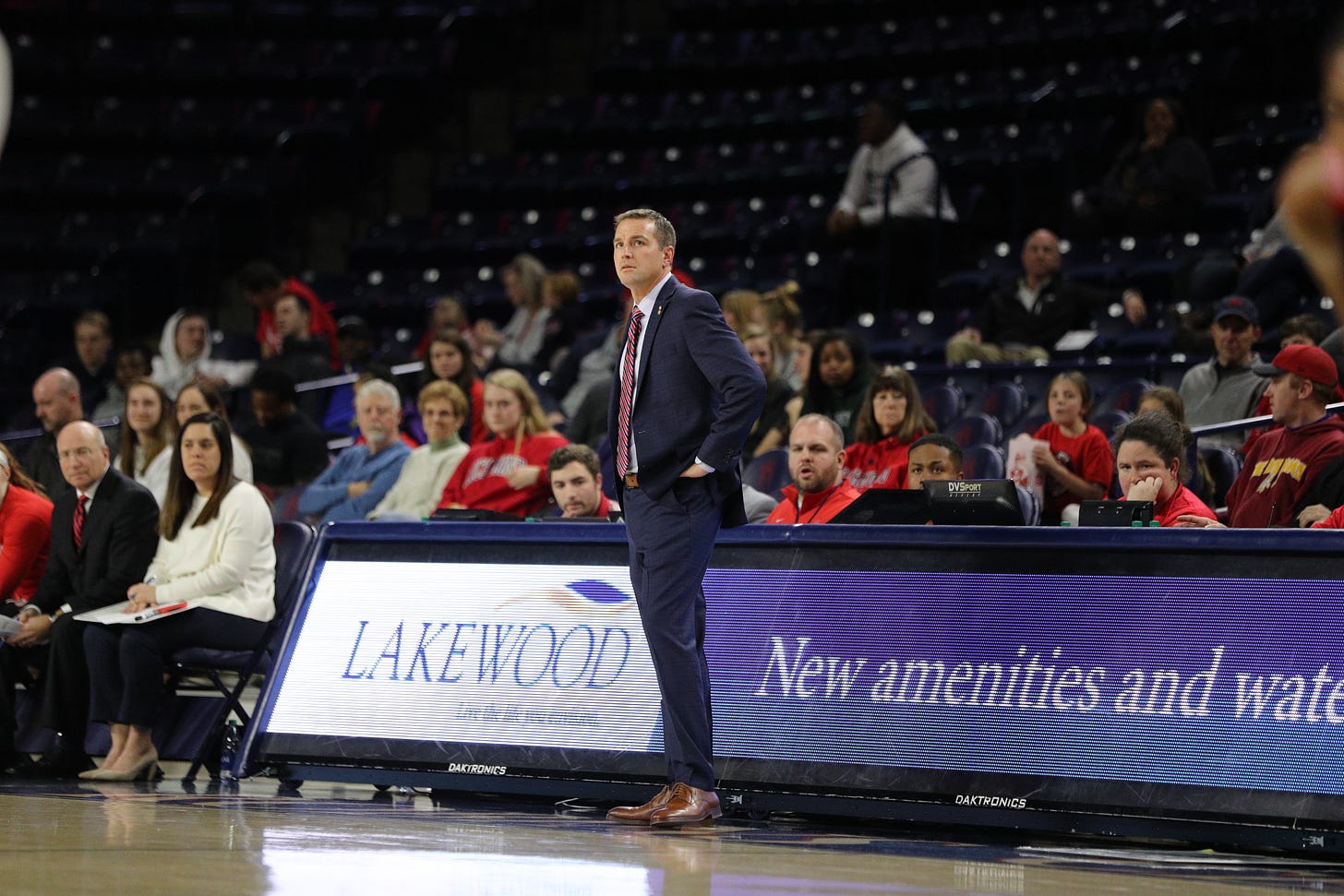
Aaron Roussell looks on during a November 16, 2019 game vs. Florida Atlantic. (Photo courtesy of Richmond Athletics)
Of course, the basketball minds that head coaches are communicating with the most are their assistants. Miller and his staff have two two-hour Zoom calls each week “to specifically talk just X’s and O’s.”
When coaches aren’t talking with or learning from other coaches, they are often breaking down film — sometimes by themselves, sometimes with their players.
“I wouldn’t normally do as much [film breakdown], but I have this year because I’m tired of watching TV,” Graves said.
“Film is probably the best tool right now in terms of just X-and-O stuff,” Stanley added. “We’re having our players use Synergy to look at tape.”
Synergy’s online analytical film service has been a key component of Barnes’ toolbox as well. “I think the mental part of your game and watching yourself can still help, so we’re doing small film sessions,” she said.
Reeve, who has been watching film of games that she “already watched five times anyway” in order to “break pieces out of it to share with players,” sees a silver lining of the WNBA season’s postponement. “In some ways, it’s a bit of an advantage for the rookies,” she said. “I know it sounds odd to say that [given] all that this class has been through, but in some ways this is actually good for them.”
In a typical year, WNBA rookies start their first professional season mere weeks after finishing their college careers, sometimes just days after graduating. In addition to the added rest the delay provides, it also gives Reeve more time to call her draftees and “talk about what their roles are, show them video, show them the good icing of a wing pick [or] this is how we fight the post.”
“It’s definitely different when you’re doing it,” she said, “but you’re going in going, ‘Okay, I saw a video of what I’m supposed to do.’”
Mentors
Coaches miss sports as much as anyone — the practices, the games, the fans. But ask them what they miss the most, and they’ll all give you the same answer.
“We spend so much time with our players … there’s a lot of them I haven’t seen since we got off the bus [two months ago],” Gillespie said. “It’s just, you miss them. … You miss those connections.”
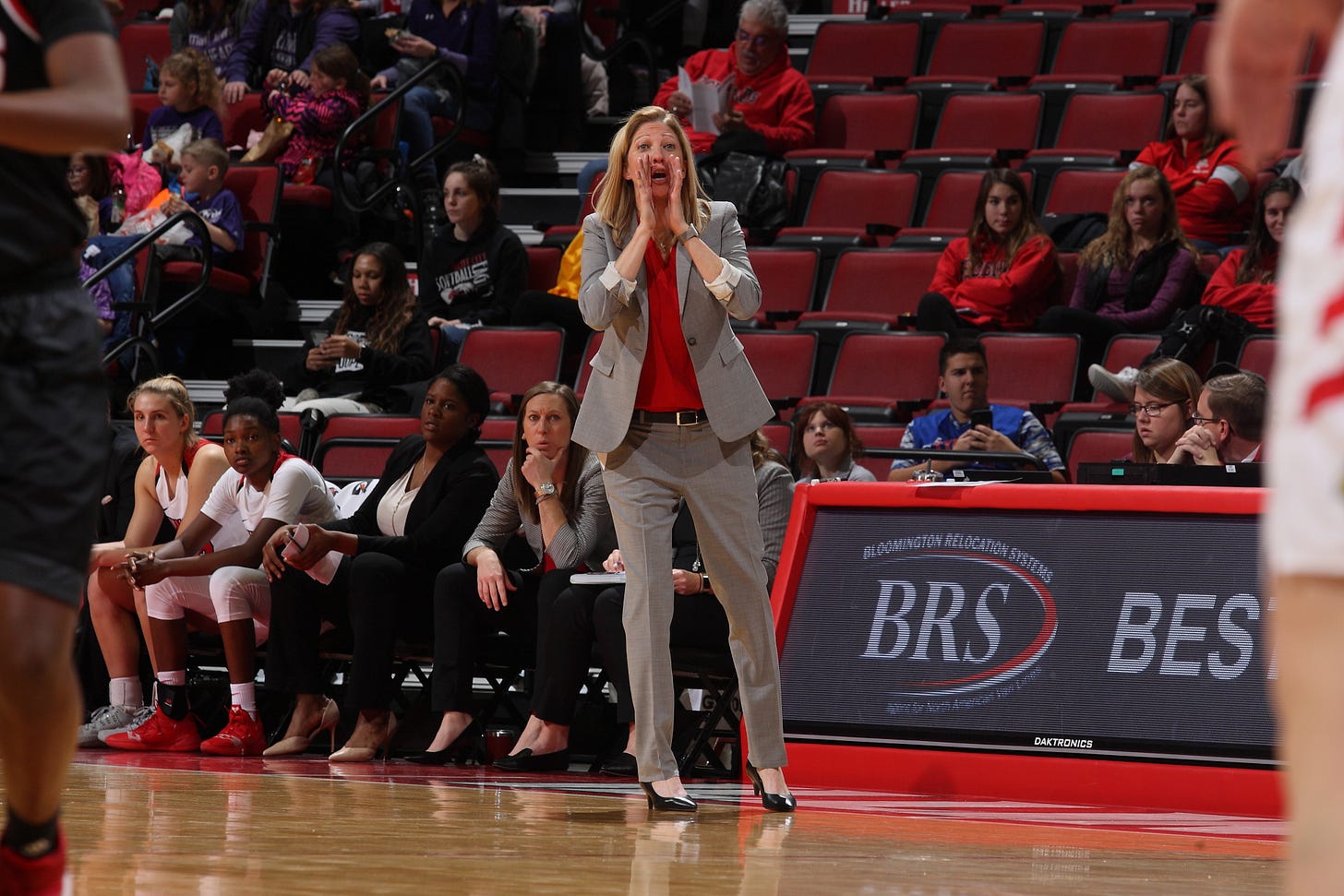
Kristen Gillespie calls a play against SIUE on December 16, 2019. (Photo courtesy of Illinois State Athletics)
For a coach like Gillespie who runs “a program built on relationships and caring for [her] kids,” keeping in touch from afar isn’t quite the same. “You can talk to them on the phone, you can text, but just having them come into your office and joking with them and just seeing them every day — that’s what I miss.”
“It’s not the same as being there or being together,” Graves added.
Nonetheless, coaches have been making do with what they have — phones, laptops, and Zoom. “Now you’re doing it from home and you’re learning different ways to do things … connecting in ways that you know that there’s a personal connection,” Reeve said.
Miller hasn’t held mandatory Zoom meetings with his players in an effort “to not overburden them,” but he and several players chat regularly and even had a Taco Tuesday Zoom call. Gillespie and the Illinois State team — managers included — have played games such as trivia on the Houseparty group video chat app. Roussell’s Zoom calls with players have included everything from Netflix recommendations to a team game of Bingo.
Virtual games aside, times are difficult. Barnes knows the importance of supporting her players emotionally. “I think it’s really hard, all the uncertainty for athletes,” Barnes said. “They don’t know if they’re going back in the fall, they don’t know if they’re gonna have a season. … So [our calls are] more to check in, make sure they’re okay.”
Checking in on players has become a higher priority than basketball for coaches.
“Right now our focus is, in the past four or five weeks, was just being there for our kids, because it was devastating for them emotionally,” Gillespie said.
“Staying in touch with the players and keeping them upbeat,” Stanley added. “[That] is the primary focus right now.”
Roussell finds that his players are much more receptive to phone calls these days. “I’ve called each of our players to check in, and I feel like it’s the most talkative they’ve ever been,” he said. “Nobody wanted to talk on the phone a few months ago.”
Miller’s goal is to balance his own role in supporting his players with that of their families. “[I’m] wanting to continue to relationship build with these guys [and] at the same time … allow them to navigate it a little bit with their own loved ones and their own lives and give them that space that I think they also need.”
Parents
For all the time with their basketball families that COVID-19 has taken away from coaches, it has given them time with their families at home. Some coaches are reunited with older children who no longer live with them. Others are, for the first time in their children’s young lives, getting to spend entire days together.
“However long this is, I want [my kids] to fondly remember some fun things that we did as a family,” Roussell said. From family meals to long walks to board games such as Rummikub or Payday (which Roussell has found helpful for teaching finances to his nine-year-old son Riley), Roussell has been soaking up the moments.
At the Graves household, a once-empty nest is full again. Kelly’s three adult sons — Max, Jackson, and Will — are all back in the family’s Eugene residence, and the NCAA’s cancellation of the April evaluation period has allowed Kelly to stay home with them. “I’ve missed the boys … usually through the end of April you really haven’t even had a chance to take a breath and hang out with the family and reconnect there after a long season,” Graves said. “It’s been nice in that regard.”
Early in the quarantine, the Graves guys took to golf to spend time together. (“I’m [usually] in the trees,” Kelly said, calling his golf game “great for social distancing.”) A couple of weeks in, Kelly’s sons started “driving [him] nuts upstairs playing on their video games,” so he decided they needed a basketball hoop. They had never needed one before — the family lives within a mile of Oregon’s Matthew Knight Arena and normally has access to the court — but with the arena (and stores that sell driveway hoops) closed, Kelly took to social media to seek a hoop to purchase.
“The next morning at 11 o’clock, I had a hoop in the driveway,” Graves said. “We’ve played some epic games. I mean, it’s a bloodbath, just two-on-two with the guys.” When they aren’t beating each other up on the court, the Graves sons have been making TikTok trick shot videos.

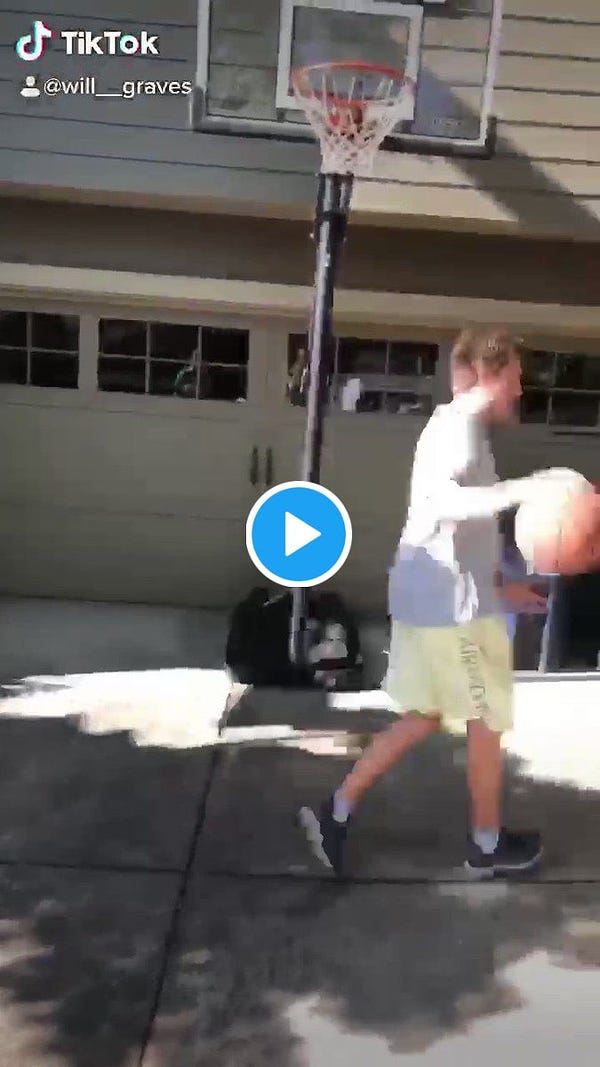
The Miller household isn’t big enough for two-on-two games, but Curt is also cherishing the unexpected extra time with his adult son. “I’ve taken advantage of that,” he said. “I’ve tried my best to get disconnected [from working too much] intentionally.” Miller keeps his offseason home in Bloomington, Indiana, and moves to Connecticut during the WNBA season, while his son, recent Indiana graduate Brian Seymour, would have been attending classes on campus this spring if not for the pandemic. With the postponement of the WNBA season and Indiana’s move to online classes, both found themselves at home for Seymour’s final weeks of college. “I really separate from him for six months of the year,” Miller said. “[This year] I’ve tried to connect more with him.”

Curt Miller watches his team warm up before Game 1 of the WNBA Finals on September 29, 2019. (Photo credit: Chris Poss)
For those with children far too young to have ever lived apart, the time together is no less sweet.
Barnes and her husband, Arizona assistant coach Salvo Coppa, have a four-year-old son, Matteo. “It’s been great for our family. I’ve never had this much time with my son in my life,” Barnes said. “It’s a tough time in the world, but I think for American families it’s gonna reset a lot of people.”
“I get to spend so much time with [my 18-month-old son] Beckett, which I absolutely love,” Gillespie said. “I jump on a meeting, then we’ll go outside and play … there will never be a point in my career that I get to spend this much time with him, and I am making the absolute most of it.”
Whereas coaches with adult sons are acquiring driveway hoops, coaches with toddlers are adding to their toy supply. “We personally have kept Amazon afloat. … It looks like Toys R Us threw up everywhere,” Gillespie joked. “I buy Beckett things all the time, but personally I think they’re for me. I bought a little indoor roller coaster that I think I ride more than he does.”
As natural teachers of basketball, it’s only fitting that some coaches are taking the opportunity to teach their kids new skills. The Roussells have been working on their game in the driveway. (“The quarantine has taught you how to shoot a left-handed layup,” Aaron tells Riley.) Meanwhile, Matteo has learned how to swim and ride a bike since Arizona’s season ended.
For Matteo, the lockdown offers one last chance to have his parents to himself — Barnes is expecting a daughter in September. The family has been avoiding contact with others and using Instacart for groceries to protect Barnes and the baby.
The routine in Reeve’s house has also changed. “Before, it’s wake up, get [Oliver] ready, let’s get him to daycare, and then I don’t see him again until after practice,” Reeve said. “[Now] the routine is 24/7.”
Reeve, whose wife is Lynx Vice President of Business Operations Carley Knox, has become Oliver’s primary caregiver by virtue of being the parent with fewer Zoom calls. “She’s on a Zoom call all the time. I don’t know how she’s doing it,” Reeve said. “I have days where I might have a couple, three days at most where I have two or three Zoom calls, and it drives me nuts, and she does it all day every day.”
As much as coaches are enjoying the quality time with their kids, no one stays cooped up with the same people for weeks without wanting a bit of a break. “It’s been amazing to have all these meals with family that you otherwise wouldn’t have,” Roussell said, “but then sometimes you’re like, ‘Oh, another meal with these three kids? When can we get a babysitter and go out to eat?’”
The feeling may be mutual. “Sometimes [Riley] might get sick of Dad getting to coach him,” Roussell said. “[At first] he thought that was cool, but I feel like now there’s some times where he’s like, ‘Can your players get back here so you can coach them?’”
One thing neither has tired of? ESPN’s “The Last Dance” documentary. “[Riley is] a LeBron guy,” Roussell said. “I’ve had this argument with my friends about Jordan vs. LeBron, and now I can have it with my nine-year-old.”
From Zoom meetings to film sessions to recruiting calls to family time, coronavirus cancellations haven’t left coaches twiddling their thumbs. “There’s still plenty of work,” Roussell said. “I don’t think this is a profession that’s sitting here struggling to find things to do.”
The lack of travel has given coaches some rare moments to pursue other activities, however. Reeve is in the middle of home renovations; Gillespie’s lawn “has never looked better.” Miller has joined the Netflix revolution (and is “making up for lost time”); Stanley has been reading Tom Brokaw’s “The Greatest Generation.”
No matter rookie or veteran, rebuilding or contending, college or pro, all coaches right now have one thing in common: They can’t wait to trade the couch for the court.
Thanks for reading the Her Hoop Stats Newsletter. If you like our work, be sure to check out our stats site, our podcast, and our social media accounts on Twitter, Facebook, and Instagram. You can also buy Her Hoop Stats gear, such as laptop stickers, mugs, and shirts!
Haven’t subscribed to the Her Hoop Stats Newsletter yet?





